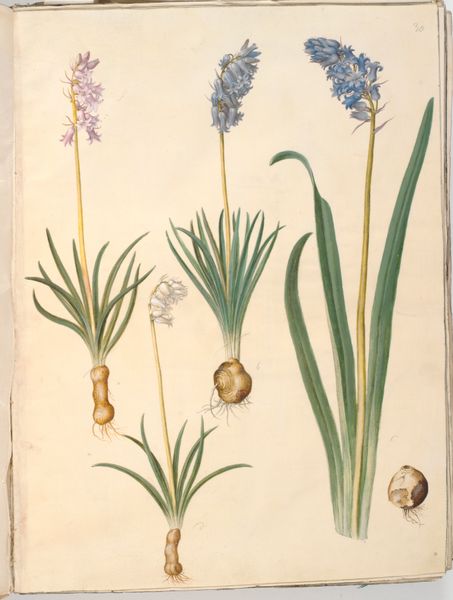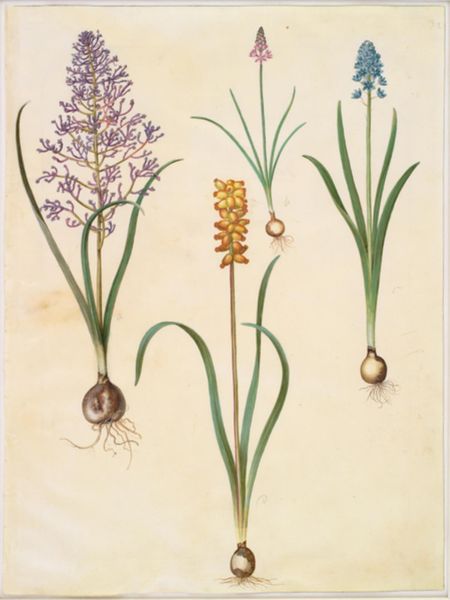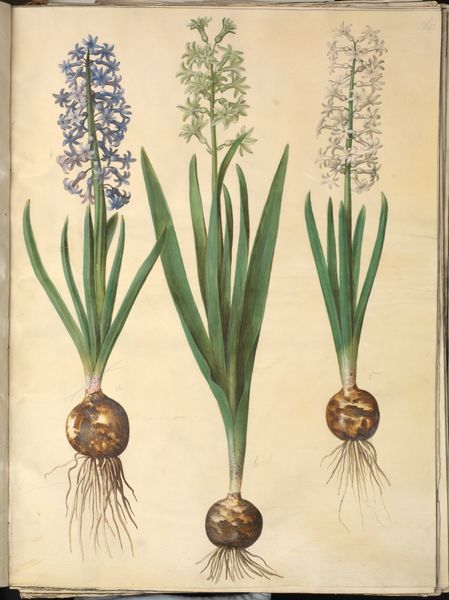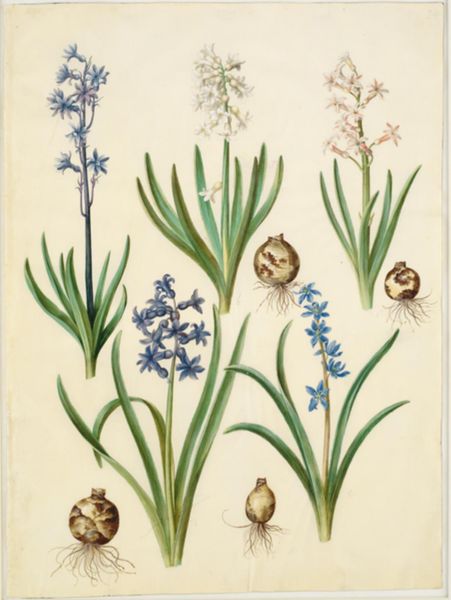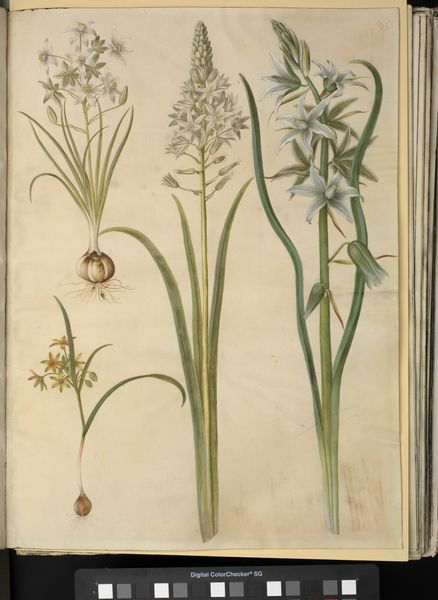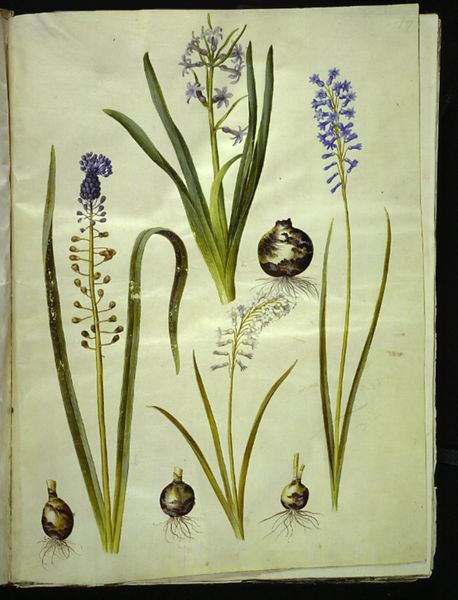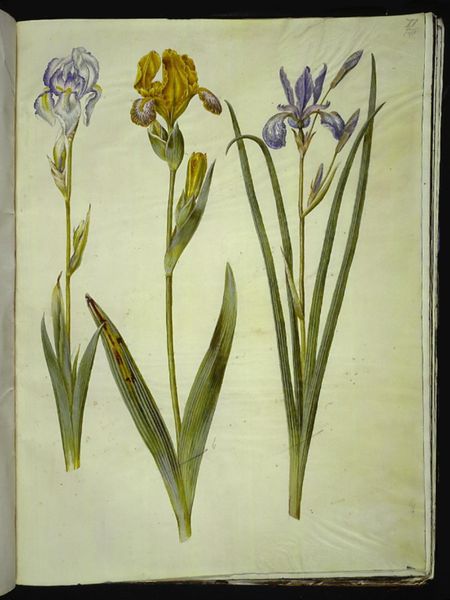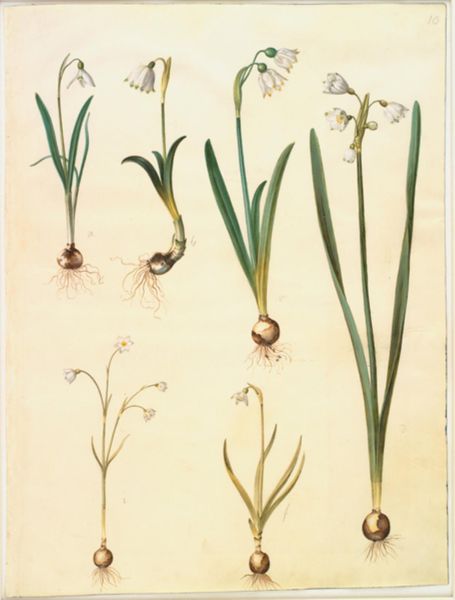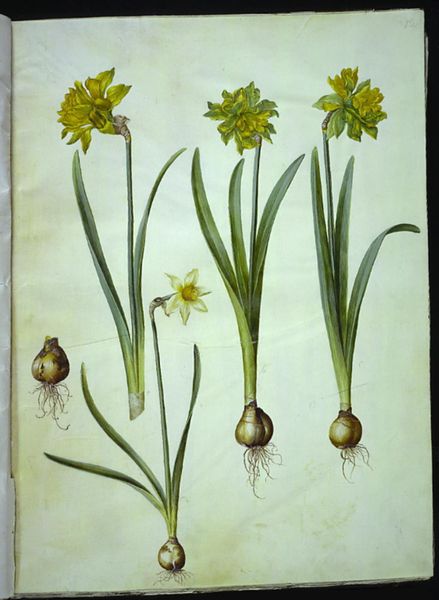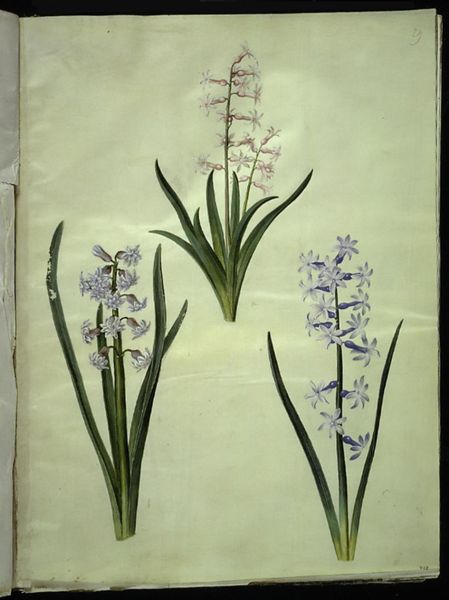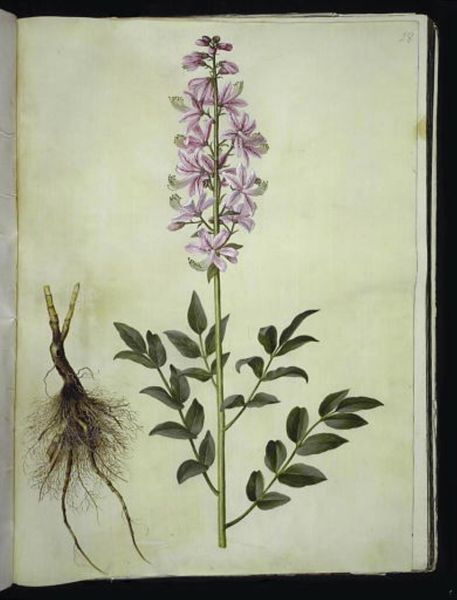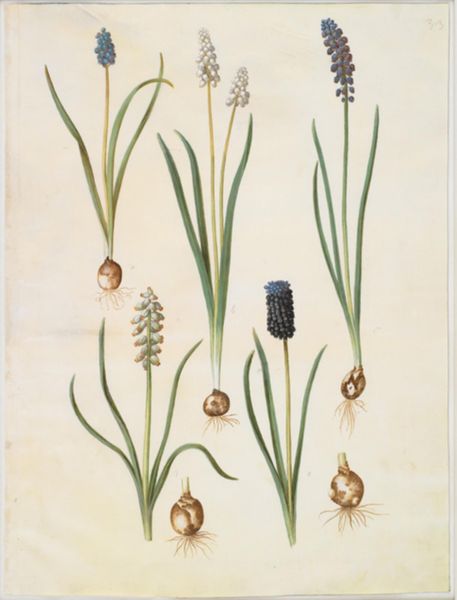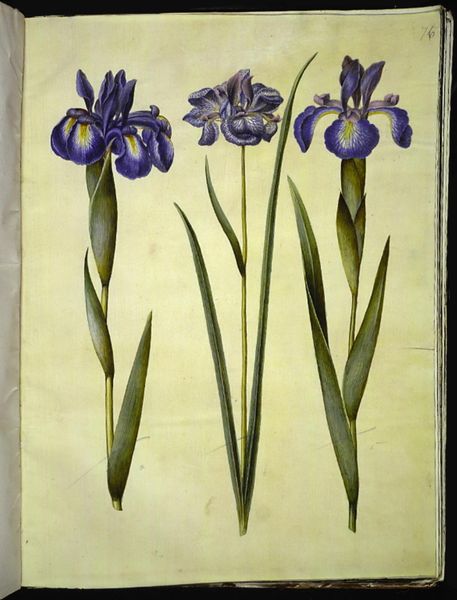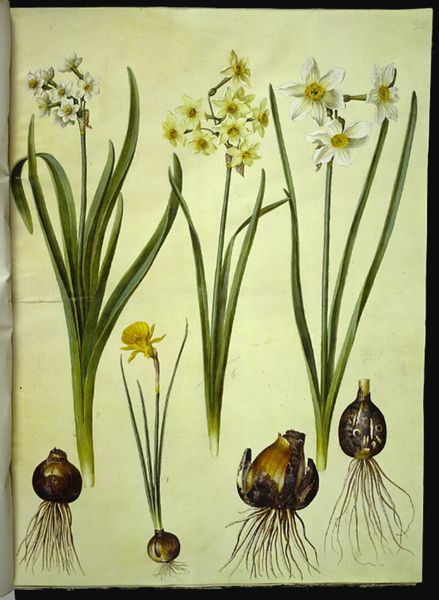
Brimeura amethystina (pyrenæisk hyacint); Hyacinthus orientalis (almindelig hyacint) 1649 - 1659
0:00
0:00
drawing, gouache, watercolor
#
drawing
#
water colours
#
baroque
#
ink painting
#
gouache
#
watercolor
#
watercolor
Dimensions: 505 mm (height) x 385 mm (width) (bladmaal)
Editor: So, this is “Brimeura amethystina; Hyacinthus orientalis” by Hans Simon Holtzbecker, made sometime between 1649 and 1659. It's a watercolor, gouache, and ink drawing of different types of hyacinths. What I find striking is how grounded it feels, showing not just the flower but the whole plant, bulb and all. What do you see in it? Curator: Well, beyond the surface beauty, I think it is worth considering what these depictions can tell us about 17th-century horticulture and the labor involved. Think about the materials: the pigments for the watercolors, the paper itself. Where did they come from, who made them, and what processes were used? Editor: That’s fascinating, I never really thought about the materials themselves as being tied to labor. It seems obvious now. What was the purpose of making a drawing like this back then? Curator: Botanical drawings served multiple purposes. While appreciating its aesthetic qualities, we should not forget its function in early scientific exploration. The detailed rendering and different presentations aided scientific study, accurate record-keeping and plant classification and exchange. What this record also allows us to see is the growing market for exotic bulbs during the Dutch Golden Age and its link to wealth and colonial expansion. The labour of acquiring and cultivating these plants is inscribed into the drawing. Editor: So, you're saying the image represents not just the flowers themselves, but the whole system of labor and trade that brought them to be cultivated and documented? Curator: Exactly. Consider it like this: what appears as an elegant floral study is also a window into 17th century resource distribution. Editor: Wow, I’ll never look at botanical art the same way again. Thanks! Curator: My pleasure! It's all about seeing the unseen layers within the artwork.
Comments
No comments
Be the first to comment and join the conversation on the ultimate creative platform.
